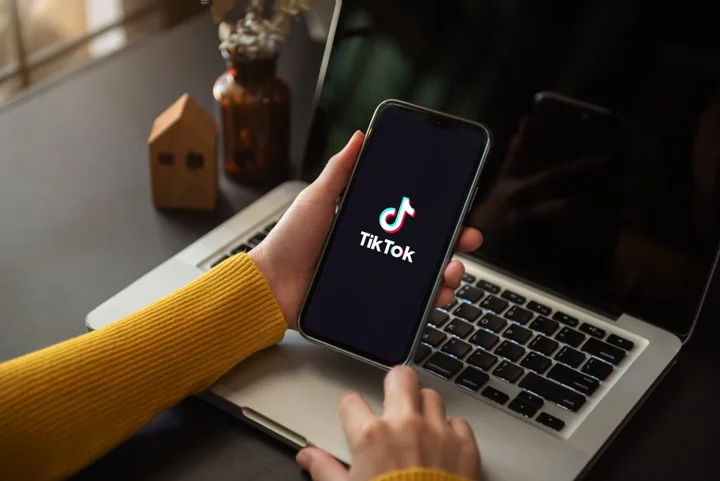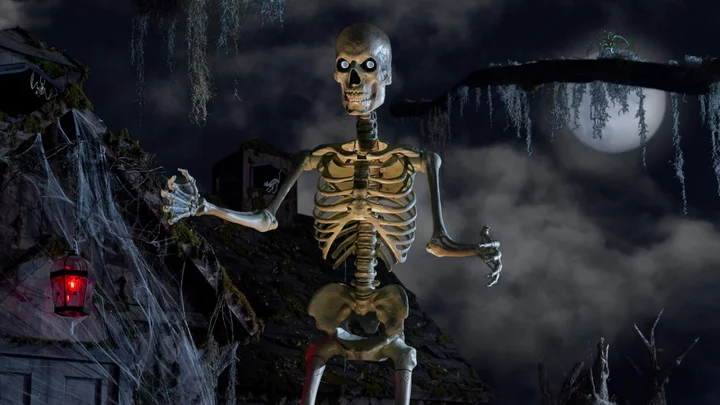It has been nearly four years since I made my first TikTok, bright-eyed and sporting a bob on the third floor of the BBC’s New Broadcasting House back when I was a video journalist there. It’s not just my hair length that’s changed; in the time it’s taken for my hair to grow down past my elbows, the representation of news media on TikTok has exploded. This is a win for the digital audiences who have flocked there – or so it seemed, until a new study was released this month.
Researchers Nick Hagar from the New York Times and Nicholas Diakopoulos of Northwestern University have published a study in New Media and Society which investigated how news content was amplified and recommended on the TikTok For You Page. Bear in mind that at the end of 2022, the Reuters Institute of Journalism found that about half (49 percent) of the world’s top news publishers were posting on TikTok, and even more have joined since.
To examine how often these publishers were being suggested to users, Hagar and Diakopoulos had to create a methodology as TikTok does not allow for API access, the tech tool that’s needed to dig deep into the platform. First they started a ‘pipeline’ to scrape recommended accounts from TikTok, beginning with accounts from The Washington Post, NBC News, National Public Radio, and PBS News. They built out a list of the ensuing recommended news-producing accounts, which had to either be news publishers, professional journalists, or news aggregators/commentators. Then 60 bots were programmed, with varying levels of news interest, to detect or determine whether to watch or skip videos based on their transcripts’ overlap with that day’s New York Times headlines. Of the 6,568 videos served up to the bots, just six fitted the authors’ classification of news.
SEE ALSO: What's on TikTok news whiz V Spehar's For You Page?The study is not reassuring reading for news providers, but for experienced news creators on the app, it’s of no surprise. The decision to begin the process in the first place by starting with four prominent U.S. news accounts, rather than four prominent news creators who may be unaffiliated with news media, is also an interesting choice given we know users are far more likely to follow their work than that of a mainstream news account.
The Reuters Institute of Journalism has long found that audiences on all platforms want to consume the content of ‘personalities’ over mainstream news accounts, not only on TikTok but on YouTube and Instagram, too. The last app in the social media ecosystem to still value mainstream news providers according to institute’s 2022 Digital News Report was Twitter, but it is likely even that reification has begun to rot post-Musk. It’s therefore unsurprising that the authors of this study found that mainstream news media accounts were rarely recommended; they weren’t seeding the beginning of the methodology with the most highly engaged news accounts on the app in the first place.
"Trad media is trying to use the same metrics of success they’ve always used," V Spehar, who makes content about news as @Underthedesknews, told Mashable in reaction to the study. "And new media doesn’t play in that world, especially on TikTok where peer learning and niche content as well as news communicator personalities matter more."
They added: "TikTok emerged as a source for news in spite of trad media, and was built as a place to escape the cable news. It gave folks tuning in the idea that somehow all these creators are 'unbought', more trustworthy and not part of the establishment…even though all of their research and stories presented are almost always sourced directly from legacy media."
A resistance on journalists’ part to create content on TikTok – which is often down to a range of reasons from not feeling confident on camera to lacking video training or thinking, erroneously, that TikTok is for teenagers – has led to a bizarre media bifurcation on the app where you often either have mainstream news media accounts or news creators completely unaffiliated with traditional media. A rare few of us straddle both worlds; I once made original TikTok content whilst also being a BBC and then VICE News reporter, and now do so as a freelancer. Max Foster makes TikToks whilst also being a CNN news anchor.
SEE ALSO: TikTok clarifies its moderating policies amid Israel-Hamas warFoster has twice my following at 1.2 million followers, but neither of us have the following of Dylan Page, TikTok’s ‘news daddy’ with 9.8 million followers who makes repeatedly viral content around mainly on-diary news stories. Like Spehar described, the vast majority of his stories are sourced directly from legacy media. A traditional journalist would raise their eyebrows at the fact he was recently in Saudi Arabia or has been paid to make content about a stock, but in the absence of a staff journalist salary, a news creator has to make ends meet in ways that sharply contrasts traditional values around independent journalism. It shows that the new TikTok media landscape demands a value shift that traditional news media shuns. But news creators like him know how to make (usually someone else’s) independent journalism do incredibly well online, and better than the original author or breaking news specialist – and that can’t be shunned if news media wants to keep up with the times.
Younger audiences have far wider definitions of what may be considered newsworthy.Nieman Lab took a depressing view of the research, with the cheery headline "The news will not find you on TikTok." But my reaction wasn’t quite as defeated. If you decide news only comes from traditional media, and you decide it’s only allowed to be ‘hard news’, then maybe. But younger audiences have far wider definitions of what may be considered newsworthy – these will almost certainly have contrasted to what the New York Times deemed was newsworthy in the authors’ study. Traditional news media accounts also are hardly unwatched — Sky News on TikTok has just hit 5 million followers, my former team at VICE News have 3.5 million. This content is being seen, and engaged with.
I always think it’s more useful to define this space of content as information, rather than news, because the minute you construe it as that you realise how much information barrages you on TikTok every day. You do not have to be a news creator to make content about news or information either – videos talking about the news are made by creators around the world every day who come from all walks of life.
SEE ALSO: You wrote a book! Now make a viral TikTok about it.That’s why other studies and polls also tell us that audiences are increasingly going to TikTok for news. Google's SVP Prabhakar Raghavan has previously revealed "something like almost 40 percent of young people, when they're looking for a place for lunch, they don't go to Google Maps or Search. They go to TikTok or Instagram." The study he referenced was a survey of U.S.-based users aged 18 to 24. In the UK, OfCom’s 2023 report on news consumption showed one in ten adults are using it to keep up with the news, demonstrating that the app has overtaken BBC Radio 1 and Channel 5. TikTok also reaches 20 percent of 18-24 year olds across global markets specifically for news.
In shifting our understanding of our online ecosystem from one of social media to one of algorithmic media, the types of content which gets amplified on platform’s algorithms are going to become increasingly existential to news providers. In the older age of social media, follower counts were key, and audiences automatically searched and followed legacy media accounts they had heard of out of habit. Now, we let the content come to us, curated by a platform feeding off our habits and their repertoire of most engaging videos. If news media doesn’t want to make content that rivals expert news creators, their videos simply won’t appear.
"I think it’s a struggle to make room for both," Spehar said. "The dynamic and well trained research and journalism of trad media folks, AND the dynamic and well curated presentation of stories by TikTok personalities."
"We need both."









